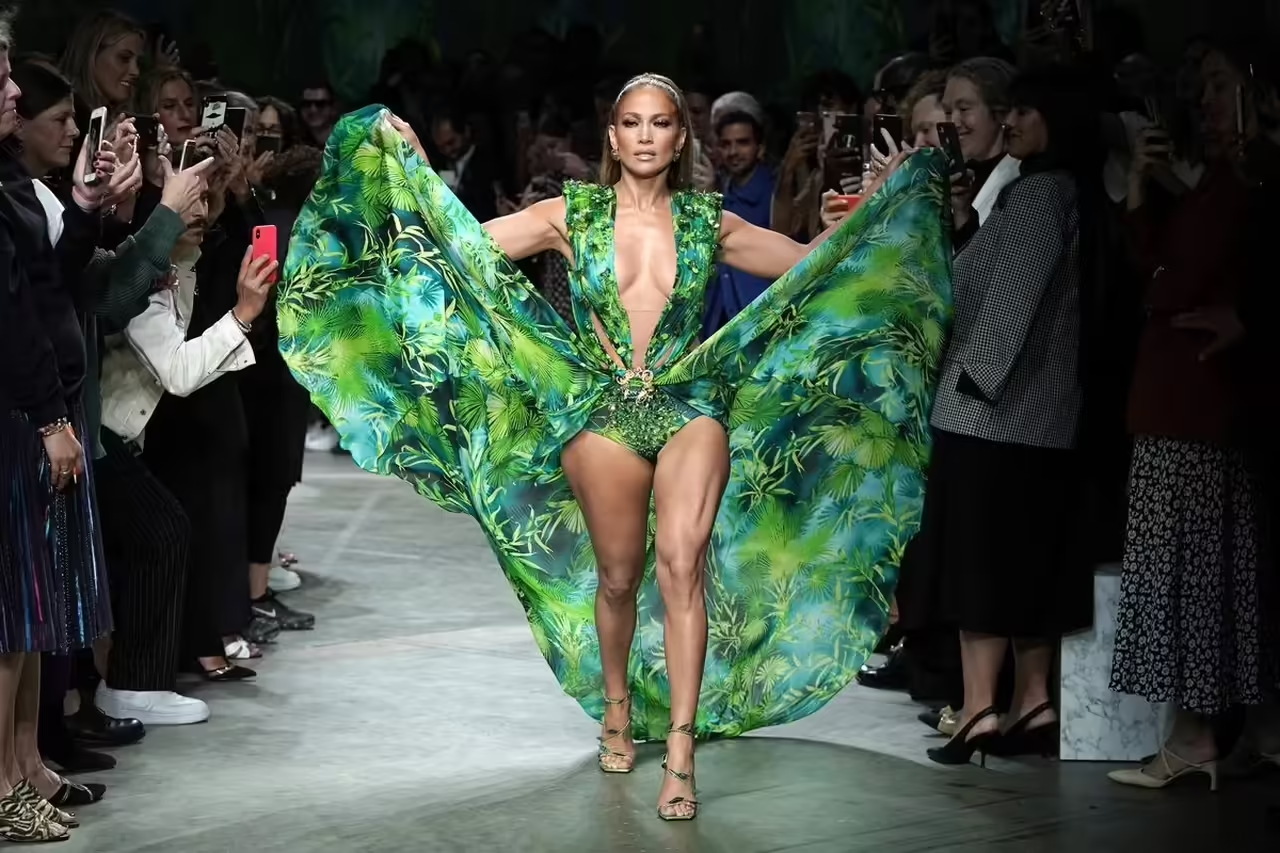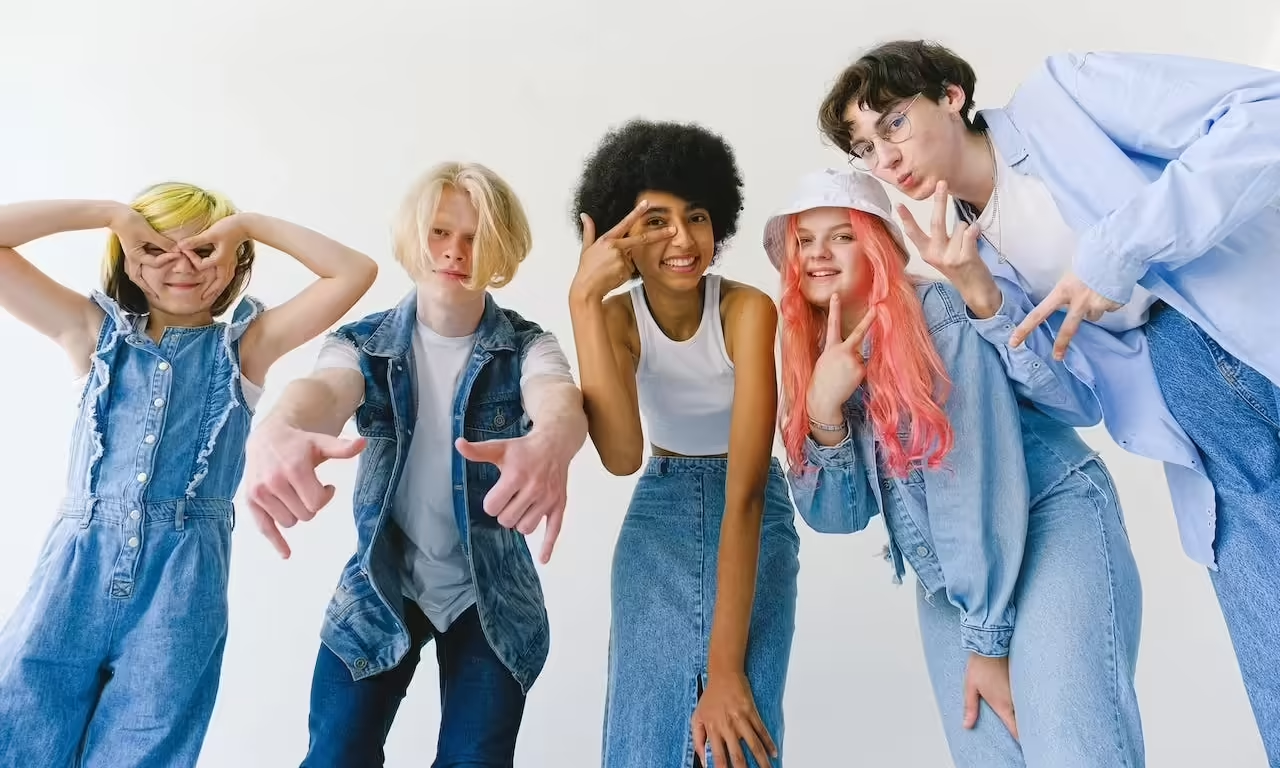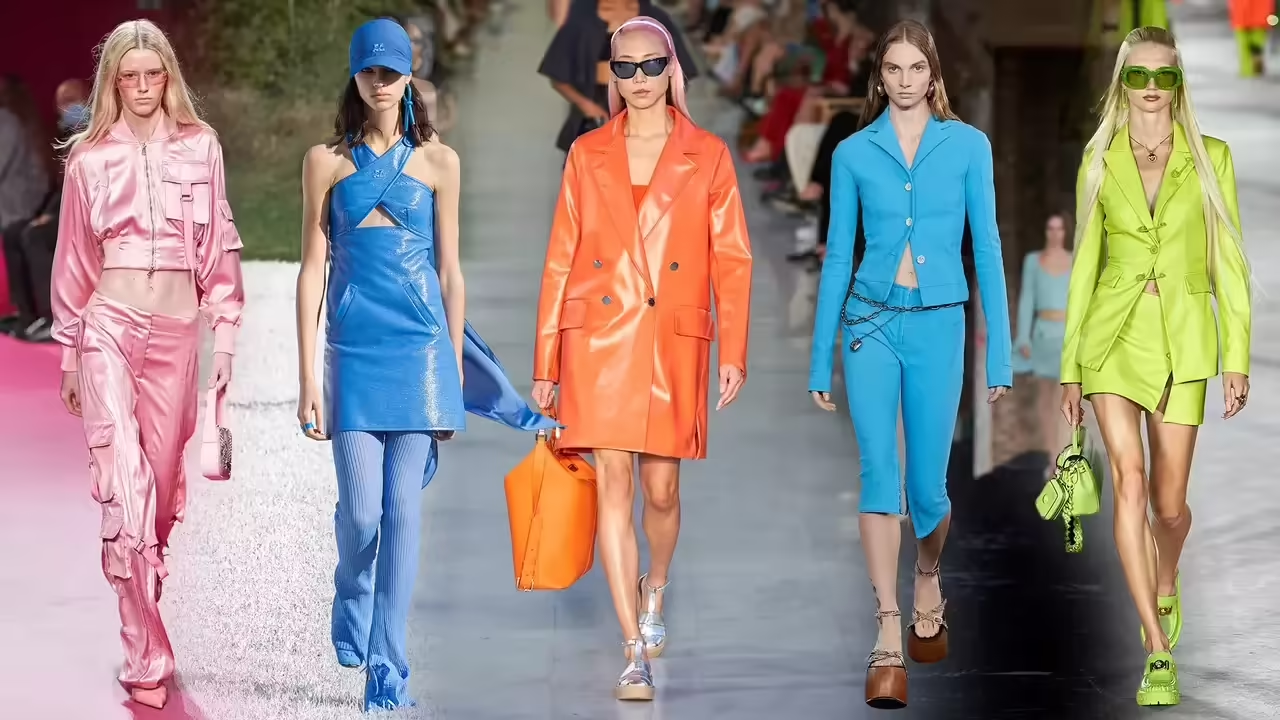
Fashion is a dynamic and expressive form of art that reflects the culture, values and aspirations of different times and places. Throughout history, there have been moments that changed fashion forever, either by introducing new styles, materials, techniques or influences. Here are some examples of such moments:
The invention of the sewing machine in the 19th century revolutionized the production and distribution of clothing, making it faster, cheaper and more accessible to the masses. The sewing machine also enabled the creation of more complex and elaborate designs, such as ruffles, pleats and embroidery.
The rise of haute couture in Paris in the late 19th and early 20th century established fashion as a form of high art and a symbol of status and prestige. Haute couture designers such as Charles Frederick Worth, Paul Poiret, Coco Chanel and Christian Dior created original and innovative garments that showcased their artistic vision and craftsmanship.
The influence of cinema and celebrities in the 20th century popularized certain styles and trends that were adopted by millions of people around the world. For instance, the flapper look of the 1920s, inspired by actresses like Clara Bow and Louise Brooks; the glamorous Hollywood style of the 1930s and 1940s, epitomized by stars like Greta Garbo and Marlene Dietrich; or the casual and rebellious style of the 1950s, exemplified by icons like James Dean and Marilyn Monroe.
The social movements and cultural changes of the 1960s and 1970s challenged the norms and conventions of fashion, giving rise to more diverse and expressive forms of dressing. The hippie movement embraced natural fabrics, ethnic prints, psychedelic colors and accessories like beads and flowers. The feminist movement advocated for more comfortable and practical clothing for women, such as pantsuits, miniskirts and jeans. The punk movement rejected the mainstream fashion industry and created its own DIY aesthetic, using elements like safety pins, leather jackets and ripped jeans.
The globalization and digitalization of fashion in the late 20th and early 21st century expanded the sources of inspiration and innovation for fashion designers and consumers alike. The internet and social media enabled the dissemination and exchange of information, images and ideas across borders and cultures. The emergence of fast fashion made fashion more affordable and accessible, but also raised issues of sustainability and ethics. The development of new technologies such as 3D printing, smart fabrics and wearable devices opened new possibilities for creating interactive and functional clothing.
The Revolution of the Little Black Dress: Coco Chanel’s Timeless Icon
In the ever-evolving landscape of fashion, certain garments transcend the boundaries of time and become eternal symbols of elegance and sophistication. Among these, none shine as brightly as the iconic “Little Black Dress,” a revolutionary creation by the legendary Coco Chanel in the 1920s. This simple yet profound piece of fashion history not only changed the way women dressed but also left an indelible mark on the very essence of style.
The Birth of an Icon
In the aftermath of World War I, Coco Chanel sought to liberate women from the constraints of elaborate and restrictive fashion. In 1926, she introduced the world to the Little Black Dress, a sleek and versatile garment that defied the ornate styles of the time. Its simplicity was a stark departure from the extravagant flapper dresses and corsets that dominated women’s fashion.
Redefining Elegance
Chanel’s design philosophy was rooted in the idea that fashion should be both comfortable and chic. The Little Black Dress perfectly encapsulated this vision. With its clean lines, modest length, and understated elegance, it became a symbol of timeless sophistication. Chanel famously declared, “Fashion fades, only style remains the same,” and the Little Black Dress embodied this enduring sense of style.
A Wardrobe Essential
What made the Little Black Dress revolutionary was its versatility. Before its introduction, black was primarily associated with mourning or reserved for eveningwear. Chanel’s creation changed this perception, transforming black into a color suitable for any occasion. The dress could effortlessly transition from day to night, from casual to formal, making it an essential item for every woman’s wardrobe.
Cultural Impact
The cultural impact of the Little Black Dress cannot be overstated. It became a symbol of women’s emancipation, reflecting the changing roles and attitudes of the post-war era. No longer confined to restrictive clothing, women embraced the freedom and confidence that came with wearing the Little Black Dress. Its popularity soared, and it became a staple for Hollywood stars and fashion icons alike.
Enduring Legacy
Nearly a century later, the Little Black Dress remains as relevant as ever. Fashion designers continue to draw inspiration from Chanel’s groundbreaking creation, reinventing and reinterpreting it for each new generation. The dress’s adaptability and timelessness have solidified its status as a true fashion classic.
The Era of Haute Couture: Transformative Designs in Post-War Paris
In the aftermath of World War II, as the world sought to rebuild and redefine itself, a new era dawned in the realm of fashion. This period saw the emergence of Haute Couture in Paris, a movement that would forever alter the landscape of style and set the stage for iconic designers like Christian Dior and Balenciaga to shape the future of fashion.
The Resurgence of Parisian Elegance
The post-war years marked a turning point for the fashion capital of the world, Paris. As the city emerged from the shadows of conflict, there was a collective desire for renewal and a return to glamour. In this atmosphere, haute couture, or high fashion, took center stage, becoming synonymous with opulence, craftsmanship, and artistic expression.
Christian Dior: The Architect of New Look
Enter Christian Dior, a visionary designer whose debut collection in 1947 would forever alter the course of fashion. Dior’s “New Look” was a revolutionary departure from the utilitarian styles of wartime fashion. With nipped waists, full skirts, and luxurious fabrics, Dior’s creations embodied a newfound sense of femininity and extravagance. The fashion world was captivated, and Dior became a symbol of post-war rejuvenation.
Balenciaga’s Architectural Elegance
Simultaneously, in the ateliers of Balenciaga, another maestro was crafting his own legacy. Cristóbal Balenciaga, often referred to as the “Master of Haute Couture,” brought an architectural precision to fashion. His designs were characterized by sculptural silhouettes, innovative fabric choices, and an unwavering commitment to craftsmanship. Balenciaga’s influence extended far beyond the runways, solidifying him as a revered figure in the history of haute couture.
The Impact on Fashion
The designs of Dior and Balenciaga not only adorned the elite but permeated popular culture, influencing the way women across the globe dressed. The structured elegance of Dior’s creations and the avant-garde sensibility of Balenciaga’s designs redefined the notion of femininity and sophistication. The fashion industry, once constrained by austerity, was now liberated by the extravagant and luxurious aesthetic of haute couture.
Legacy and Evolution
The legacy of the era of haute couture endures in contemporary fashion. The influence of Dior’s New Look and Balenciaga’s architectural elegance can be seen in the works of modern designers who continue to draw inspiration from the golden age of Parisian high fashion. The standards of craftsmanship, attention to detail, and the celebration of individuality established by these pioneers continue to shape the haute couture landscape today.
Punk and Subversive Fashion: A Rebellion Stitched in Style
In the tumultuous years of the 1970s, a counter-cultural movement emerged from the gritty streets of London and New York, challenging the status quo and leaving an indelible mark on the world of fashion. Punk, with its anarchic spirit and anti-establishment ethos, found an unexpected ally in the realm of style, where designers like Vivienne Westwood would redefine the very essence of rebellion through clothing.
The Birth of Punk
Punk was more than a genre of music; it was a visceral reaction against the societal norms and political unrest of its time. The do-it-yourself ethos and anti-establishment attitude that permeated punk music quickly spilled over into the fashion scene. The punk aesthetic, characterized by ripped clothing, safety pins, and bold expressions of individuality, became a symbol of defiance against the mainstream.
Vivienne Westwood: Queen of Punk Couture
At the forefront of the punk fashion revolution was Vivienne Westwood, a designer whose avant-garde creations challenged conventional notions of beauty and style. Teaming up with Malcolm McLaren, the manager of the Sex Pistols, Westwood’s boutique, “SEX,” became the epicenter of punk fashion. Her designs, often featuring bondage gear, torn T-shirts, and confrontational graphics, embodied the rebellious spirit of the punk movement.
DIY Attitude and Individual Expression
Punk fashion celebrated the do-it-yourself ethos, encouraging individuals to express their creativity without conforming to established norms. Ripped jeans, customized leather jackets, and DIY accessories became the uniform of the punk subculture. The deliberate disregard for traditional fashion conventions sent a powerful message – fashion could be a form of personal rebellion and a means of rejecting societal expectations.
Impact on Mainstream Fashion
What started as a subversive subculture on the fringes of society quickly infiltrated mainstream fashion. The DIY aesthetic, once seen as a rejection of traditional beauty standards, became a source of inspiration for high-end designers. The edgy, rebellious look championed by punk found its way onto the runways, forever altering the landscape of the fashion industry.
Permanence in Style
The punk movement may have emerged from a specific moment in time, but its impact on fashion has proven enduring. The subversive spirit and rebellious attitude continue to influence designers and inspire new generations of fashion enthusiasts. Punk’s legacy is not just in the torn clothing and safety pins but in the idea that fashion can be a powerful form of self-expression and resistance.
The Invasion of Japanese Designers: Pioneering Avant-Garde Fashion in the West
In the vibrant landscape of 1980s fashion, a seismic shift occurred as a wave of Japanese designers crashed onto the shores of the Western fashion scene. Visionaries such as Issey Miyake, Rei Kawakubo, and Yohji Yamamoto brought with them a revolutionary and conceptual aesthetic that would reshape the very foundations of Western fashion, challenging norms and introducing a new era of avant-garde design.
The Rise of Japanese Designers
The 1980s marked a period of cultural exchange and globalization, and Japanese designers emerged as trailblazers, navigating the intersection between Eastern and Western fashion sensibilities. Issey Miyake, known for his innovative textile techniques, Rei Kawakubo, the enigmatic force behind Comme des Garçons, and Yohji Yamamoto, with his avant-garde and deconstructed designs, collectively shook the fashion world.
Issey Miyake: Technological Alchemy
Issey Miyake’s influence was felt through his groundbreaking approach to textiles and garment construction. His experimentation with pleats, unconventional fabrics, and the fusion of technology with fashion challenged the industry’s preconceptions. Miyake’s designs were a testament to the marriage of craftsmanship and technology, creating clothing that was not only visually stunning but also architecturally innovative.
Rei Kawakubo: Deconstructing Norms
Rei Kawakubo, the visionary mind behind Comme des Garçons, deconstructed the traditional notions of beauty and fashion. Her designs often defied symmetry, embraced asymmetry, and played with unconventional silhouettes. Kawakubo’s work was a rejection of mainstream aesthetics, challenging the industry to question what constituted beauty and elegance.
Yohji Yamamoto: The Poetry of Black
Yohji Yamamoto’s arrival on the Western fashion scene brought with it a poetic rebellion. Renowned for his mastery of black, oversized silhouettes, and a unique blend of Japanese and European influences, Yamamoto’s designs were a departure from the flamboyance of the 1980s. His creations, often described as “anti-fashion,” questioned the very essence of beauty and imposed a new narrative on the runway.
A Paradigm Shift in Western Fashion
The impact of these Japanese designers was profound, sparking a paradigm shift in Western fashion. Their avant-garde aesthetics challenged conventional beauty standards and redefined the parameters of what could be considered fashionable. The fashion landscape, once dominated by opulence and excess, now embraced minimalism, asymmetry, and a conceptual approach to design.
Enduring Influence
The legacy of Issey Miyake, Rei Kawakubo, and Yohji Yamamoto endures in the work of contemporary designers who continue to draw inspiration from their groundbreaking contributions. The invasion of Japanese designers in the 1980s not only left an indelible mark on Western fashion but also opened the door for a more diverse and inclusive understanding of beauty and style.
The Pandemic and the Digital Fashion Revolution: Redefining Style in a Virtual World
As the world grappled with the unprecedented challenges brought about by the COVID-19 pandemic, the fashion industry found itself at a crossroads, forced to adapt to a new reality. In this era of social distancing and lockdowns, the adoption of digital technologies has become not just a convenience but a necessity, transforming the way we experience and engage with fashion.
The Disruption of Traditional Fashion Events
The pandemic abruptly halted the traditional runway shows and fashion weeks that have long been the heartbeat of the industry. With gatherings restricted and travel curtailed, designers had to explore alternative avenues to showcase their creations. Virtual fashion shows emerged as a solution, providing a platform for designers to unveil their collections in a digital realm, accessible to a global audience.
Rise of Virtual Runway Experiences
Fashion houses, big and small, embraced the virtual runway. From immersive 3D environments to cinematic presentations, designers reimagined the traditional fashion show, pushing the boundaries of creativity and technology. Virtual runways not only allowed for artistic expression but also democratized access to fashion, inviting enthusiasts from around the world to experience the spectacle from the comfort of their homes.
The Fusion of Fashion and Technology
The pandemic acted as a catalyst for the convergence of fashion and technology. Augmented reality (AR) and virtual reality (VR) experiences became integral components of digital fashion shows, allowing viewers to virtually step into the designer’s world. This fusion of fashion and technology not only enhanced the entertainment value of fashion events but also created a more immersive and engaging experience for the audience.
E-Commerce Reinvented
The closure of brick-and-mortar stores during lockdowns accelerated the shift toward online shopping. Fashion brands, both established and emerging, ramped up their digital presence, offering virtual try-on experiences and enhanced online shopping interfaces. Consumers, confined to their homes, embraced the convenience of browsing and purchasing fashion items with a few clicks, further blurring the lines between the physical and digital retail experience.
Sustainability and Slow Fashion
The digital transformation prompted by the pandemic also spurred a reevaluation of fashion’s environmental impact. With increased awareness of sustainability, there was a growing emphasis on slow fashion and mindful consumption. Digital platforms became conduits for brands to communicate their commitment to ethical practices, transparency, and eco-friendly initiatives.
Shaping the Future of Fashion
As the world gradually adapts to a post-pandemic reality, the digital transformation of the fashion industry remains a lasting legacy. The lessons learned during this period have reshaped the way designers conceptualize and present their collections, the way consumers discover and purchase fashion, and the industry’s overall approach to sustainability.







